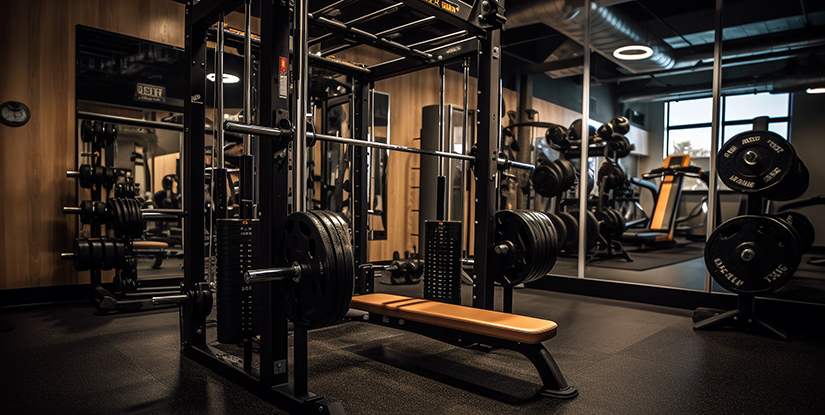Basic Fitness Equipment Guide — Essentials for Home and Gym

Overview of Basic Fitness Equipment
Choosing the right basic fitness equipment is essential for consistent progress, safety, and long-term adherence. Whether equipping a home gym or supplementing workouts at a commercial facility, a core set of equipment supports cardiovascular health, strength development, flexibility, and recovery. This guide outlines essential items, selection criteria, maintenance tips, and practical recommendations for beginners and experienced users alike.
Cardio Essentials
Cardiovascular equipment increases endurance, supports weight management, and complements strength work. Key options include:
- Treadmill — High-impact, versatile. Look for incline options, shock absorption, and reliable motor ratings for frequent use.
- Stationary bike — Low-impact cardiovascular work ideal for joint-friendly training. Choose between upright and recumbent styles based on comfort and posture.
- Rowing machine — Full-body cardio that engages legs, back, and core. Prioritize smooth resistance and adjustable damper or magnetic systems.
- Jump rope — Portable, affordable, and effective for high-intensity intervals. Ideal for warm-ups and space-limited setups.
Strength and Resistance Equipment
Strength training builds lean mass, improves bone density, and increases metabolic rate. Core tools include free weights and versatile resistance systems:
- Dumbbells — Essential for progressive overload. Adjustable or hex rubber-coated pairs protect flooring and offer longevity.
- Kettlebells — Useful for dynamic movements and conditioning. Choose weights that allow both technique work and progressive challenge.
- Barbell and weight plates — Barbell training unlocks compound lifts (squat, deadlift, bench press). Ensure barbell quality, load capacity, and plate compatibility.
- Adjustable bench — A utility piece for pressing, rows, and seated movements. Look for solid construction and multiple angle settings.
- Resistance bands — Lightweight, portable, and excellent for mobility, activation, and progressive resistance.
Mobility, Stability, and Recovery
Persistent performance depends on mobility and recovery tools that reduce injury risk and aid restoration.
- Yoga mat — Provides cushioning for floor work and stretching. Non-slip surface enhances safety.
- Foam roller — Self-myofascial release to reduce soreness and improve tissue quality.
- Stability ball — Useful for core training, balance, and rehabilitation exercises.
Accessories and Safety Equipment
Small items often determine training quality and safety:
- Weight collars/clips — Secure weight plates during barbell work.
- Lifting straps and belts — Support heavy lifts and grip fatigue while maintaining technique.
- Protective flooring — Rubber tiles or mats protect both equipment and home surfaces.
- Pull-up bar — Compact solution for upper-body and core strength.
How to Choose Equipment
Select equipment based on goals, available space, budget, and training frequency. Consider these professional criteria:
- Durability and warranty — Prioritize reputable brands and solid warranties for high-use items.
- Adjustability — Equipment that adapts to progression (adjustable dumbbells, benches, and resistance settings) delivers long-term value.
- Footprint and storage — Measure space and plan for safe access, storage racks, and floor protection.
- Noise and neighbors — Magnetic or hydraulic machines are quieter in shared living settings.
- Resale value — Metal, steel, and high-quality components retain value better than low-cost plastics.
Maintenance and Longevity
Regular maintenance reduces downtime and extends equipment life. Recommended practices include keeping machines clean, lubricating moving parts per manufacturer instructions, checking bolts and fasteners, and storing small items away from moisture and sunlight. Inspect wear points on cables, upholstery, and rubber components quarterly.
Budget-Friendly Starter Kit
For a functional home gym on a budget, prioritize:
- Adjustable dumbbells or a set of basic dumbbells
- Resistance bands set
- Jump rope and yoga mat
- Adjustable bench (optional but highly valuable)
These items enable full-body workouts, progressive overload, and conditioning without large capital investment.
Implementation: Programming and Safety
Match equipment selection to a simple, progressive program. Beginners should focus on compound movements (squat, hinge, push, pull) two to four times weekly and include dedicated mobility work. Always prioritize technique over load, and use a spotter or safety pins for heavy barbell lifts. Consult a qualified trainer for personalized programming or injury rehabilitation advice.
FAQs
- Q: What is the first piece of equipment to buy? A: Adjustable dumbbells—they are versatile and support most strength exercises.
- Q: Do I need a treadmill at home? A: Not necessary; a jump rope or bike can provide effective cardio in less space.
- Q: How much space do I need for a basic home gym? A: Allocate at least 6–10 square meters for a functional setup with room to move safely.
- Q: Are cheap weights worth it? A: Low-cost options can be useful short-term, but invest in durable weights for safety and longevity.
- Q: How often should I maintain my equipment? A: Quick inspections monthly and detailed maintenance quarterly are recommended.
- Q: Can I build strength without a barbell? A: Yes—dumbbells, kettlebells, and resistance bands can produce significant strength gains.
- Q: Is a stability ball necessary? A: Helpful for core and rehabilitative work, but optional if space or budget is limited.
- Q: What protects my floors best? A: Thick rubber flooring or interlocking tiles reduce impact and distribute weight safely.
- Q: How do I choose weight increments? A: Start with small progressive increases (2.5–5% bodyweight increments) to avoid plateaus and injury.

